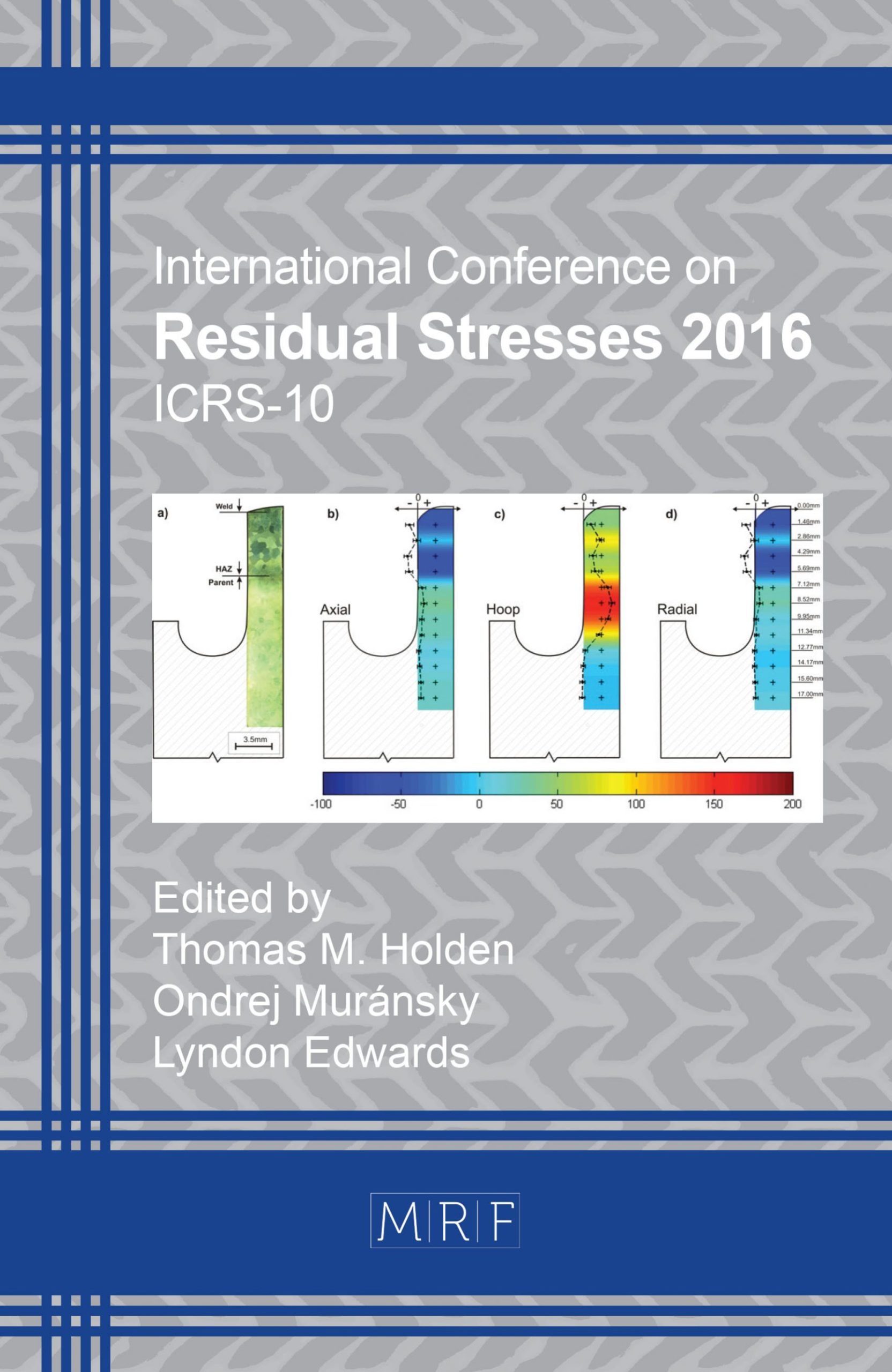Accuracy and Stability of 2D-XRD for Residual Stress Measurement
B.B. He
download PDFAbstract. Stress measurement with two-dimensional X-ray diffraction is based on the direct relationship between the stress tensor and diffraction cone distortion. Since more data points at more orientations are used for stress calculation, 2D-XRD can measure stress with high sensitivity, high speed and high accuracy. It is especially suitable for samples with large crystals, textures and curved surface. Ten almen strips were used for Gage R&R test of a 2D-XRD system for stress measurement in 1998. Since then there have been many advances in two-dimensional X-ray diffractometer, including detector technology, X-ray source and optics, goniometer, and data evaluation software. This paper covers accuracy and stability of stress measurement on the same almen strips with a 2D-XRD system.
Keywords
Residual Stress, 2D Detector, Accuracy, Stability
Published online 12/22/2016, 6 pages
Copyright © 2016 by the author(s)
Published under license by Materials Research Forum LLC., Millersville PA, USA
Citation: B.B. He, ‘Accuracy and Stability of 2D-XRD for Residual Stress Measurement’, Materials Research Proceedings, Vol. 2, pp 265-270, 2017
DOI: http://dx.doi.org/10.21741/9781945291173-45
The article was published as article 45 of the book Residual Stresses 2016
![]() Content from this work may be used under the terms of the Creative Commons Attribution 3.0 licence. Any further distribution of this work must maintain attribution to the author(s) and the title of the work, journal citation and DOI.
Content from this work may be used under the terms of the Creative Commons Attribution 3.0 licence. Any further distribution of this work must maintain attribution to the author(s) and the title of the work, journal citation and DOI.
References
[1] B. B. He, Two-dimensional X-ray Diffraction, John Wiley & Sons, Hoboken, New Jersey 2009. http://dx.doi.org/10.1002/9780470502648
[2] B. B. He, U. Preckwinkel and K. L. Smith, Advantages of Using 2D Detectors for Residual Stress Measurement, Advances in X-ray Analysis, Vol. 42 (1998) pp. 429-438.
[3] B. B. He, MicroGap area detector for stress and texture analysis, Materials Science Forum, Vol. 681 (2011), pp. 19-24. http://dx.doi.org/10.4028/www.scientific.net/MSF.681.19
[4] B. B. He, XRD2 stress measurement for samples with texture and large grains, Materials Science Forum, Vols. 768-769 (2014) pp. 227-234. http://dx.doi.org/10.4028/www.scientific.net/MSF.768-769.227
[5] T. Miyazaki and T. Sasaki, A comparison of X-ray stress measurement methods based on the fundamental equation, J. Appl. Cryst. Vol. 49 (2016) pp. 426–432. http://dx.doi.org/10.1107/S1600576716000492
[6] B. B. He, K. L. Smith, U. Preckwinkel and W. Schultz, Gage R&R study on residual stress measurement system with area detector, Materials Science Forum Vols. 347-349 (2000) pp. 101-106. http://dx.doi.org/10.4028/www.scientific.net/MSF.347-349.101































